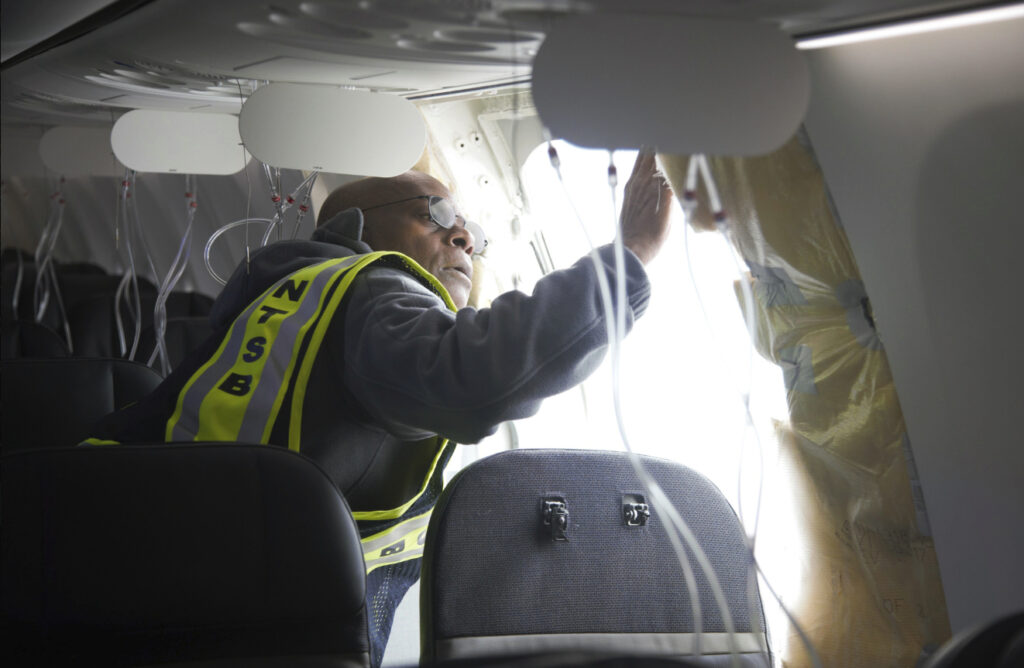The Boeing jetliner that suffered an inflight blowout over Oregon was not being used for flights to Hawaii after a warning light that could have indicated a pressurization problem lit up on three different flights. Alaska Airlines decided to restrict the aircraft from long flights over water so the plane “could return very quickly to an airport” if the warning light reappeared, Jennifer Homendy, chair of the National Transportation Safety Board, said on Sunday.
Quick Read
- A Boeing 737 Max 9, operated by Alaska Airlines, experienced an inflight blowout over Oregon, with a plug covering an unused exit door coming off during the flight.
- Prior to this incident, the jet had shown a warning light related to pressurization on three separate flights, leading Alaska Airlines to restrict its use on long flights over water.
- Shares of Boeing, Alaska Airlines, and Spirit AeroSystems (which builds parts for the 737 Max) dropped significantly following the incident.
- The National Transportation Safety Board (NTSB) is investigating the incident, including examining the door plug that was found near Portland, Oregon.
- The cockpit voice recorder did not retain the flight’s sounds, as it recorded over after two hours.
- During the incident, air pressure changes damaged seats, pulled insulation from walls, and caused the cockpit and lavatory doors to fly open, affecting communication in the cockpit.
- Two cell phones from passengers were found on the ground and handed over to the NTSB.
- The aircraft safely returned to Portland; no serious injuries were reported among the 171 passengers and six crew members.
- The Federal Aviation Administration (FAA) grounded all Boeing 737 Max 9 jets used by Alaska Airlines and United Airlines for inspections, leading to numerous flight cancellations.
- Boeing CEO Dave Calhoun has called for a companywide meeting to address the incident and its implications.
- The aircraft involved was relatively new, having been in service for about two months and flown 145 flights since November 11.
- The Boeing 737 Max series has faced previous issues, including two fatal crashes involving the Max 8 model and other manufacturing and technical concerns.
The Associated Press has the story:
Boeing jetliner that suffered blowout, was restricted due to concern over warning light
Newslooks- PORTLAND, Ore. (AP) —
The Boeing jetliner that suffered an inflight blowout over Oregon was not being used for flights to Hawaii after a warning light that could have indicated a pressurization problem lit up on three different flights.
Alaska Airlines decided to restrict the aircraft from long flights over water so the plane “could return very quickly to an airport” if the warning light reappeared, Jennifer Homendy, chair of the National Transportation Safety Board, said on Sunday.
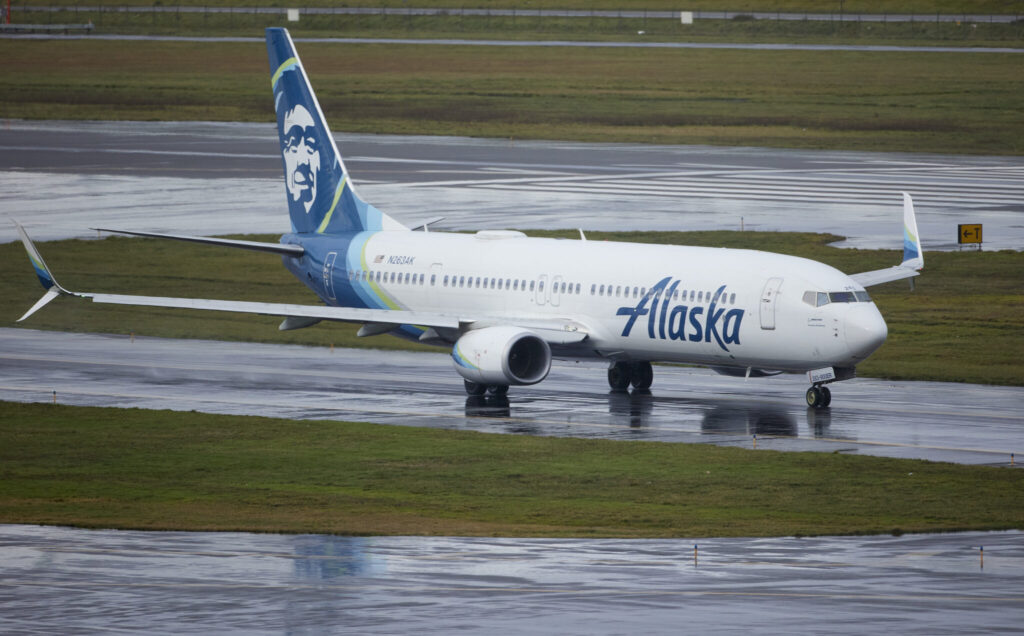
Shares of The Boeing Co. tumbled 9% at the opening bell Monday, the first day of trading since the incident occurred. Shares of Alaska Airlines slid 4% and Spirit AeroSystems, which builds the fuselage for Boeing’s 737 Max, plunged 14%.
Homendy cautioned that the pressurization light might be unrelated to Friday’s incident in which a plug covering an unused exit door blew off the Boeing 737 Max 9 as it cruised about three miles (4.8 kilometers) over Oregon.

The warning light came on during three previous flights: on Dec. 7, Jan. 3 and Jan. 4 — the day before the door plug broke off. Homendy said she didn’t have all the details regarding the Dec. 7 incident but specified the light came on during a flight on Jan. 3 and on Jan. 4 after the plane had landed. Alaska ordered additional maintenance to look at the light, but it was not completed before Friday’s incident, she added.
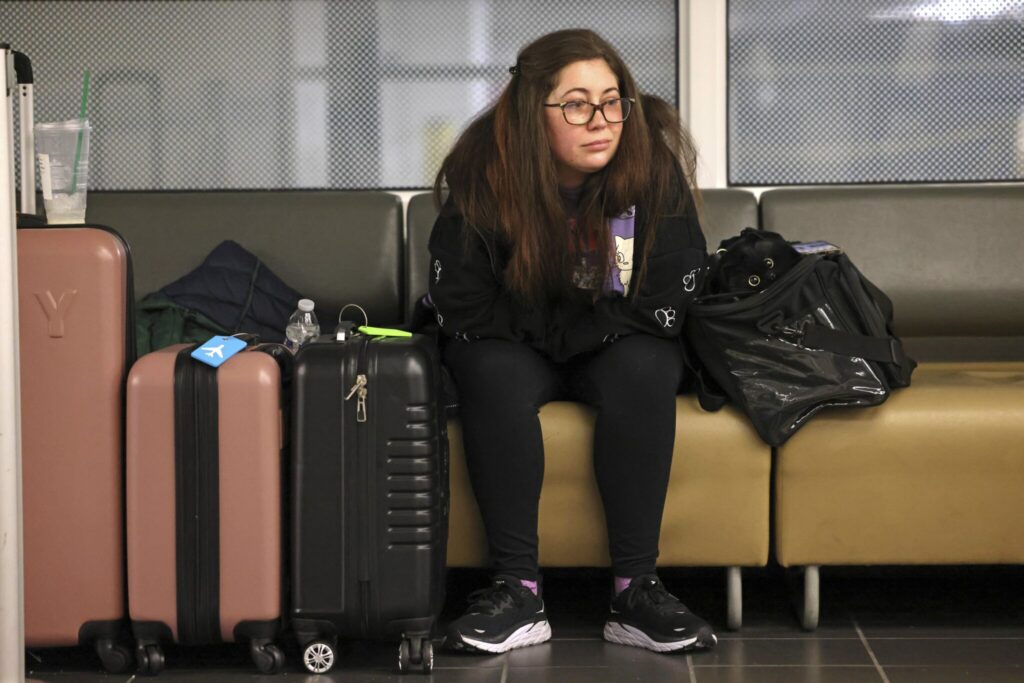
“We plan to look at that more and we’ve requested documentation on all defects since delivery of the aircraft on Oct. 31,” she said.
The NTSB said the lost door plug was found Sunday near Portland, Oregon, in a the backyard of a home. Investigators will examine the plug, which is 26 by 48 inches (66 by 121 centimeters) and weighs 63 pounds (28.5 kilograms), for signs of how it broke free.
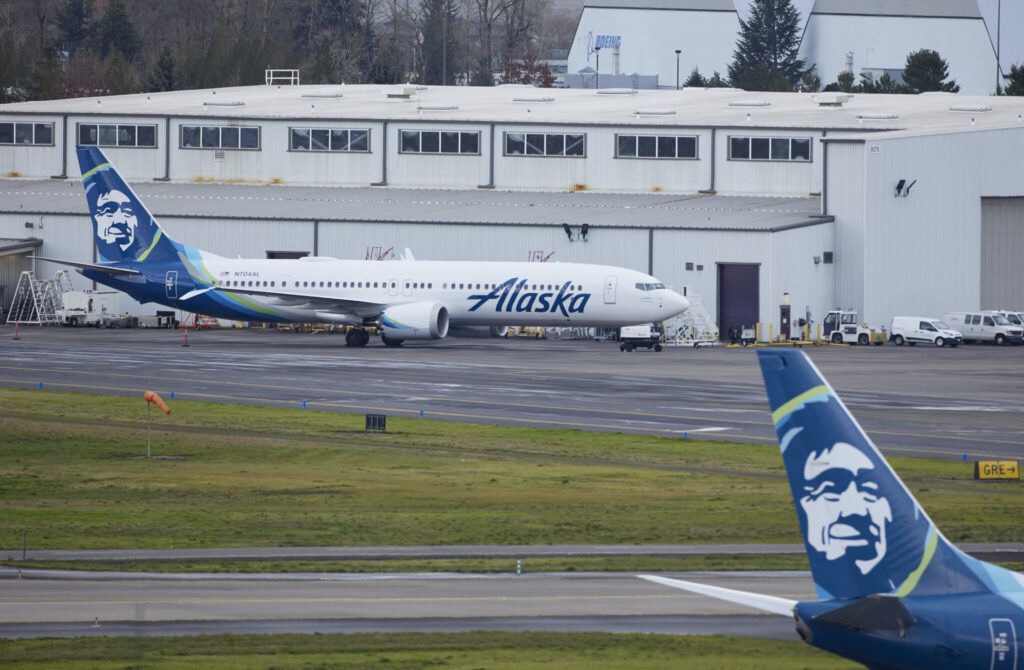
Investigators will not have the benefit of hearing what was going on in the cockpit during the flight. The cockpit voice recorder — one of two so-called black boxes — recorded over the flight’s sounds after two hours, Homendy said.
At a news conference Sunday night, Homendy provided new details about the chaotic scene that unfolded on the plane. The explosive rush of air damaged several rows of seats and pulled insulation from the walls. The cockpit door flew open and banged into a lavatory door.
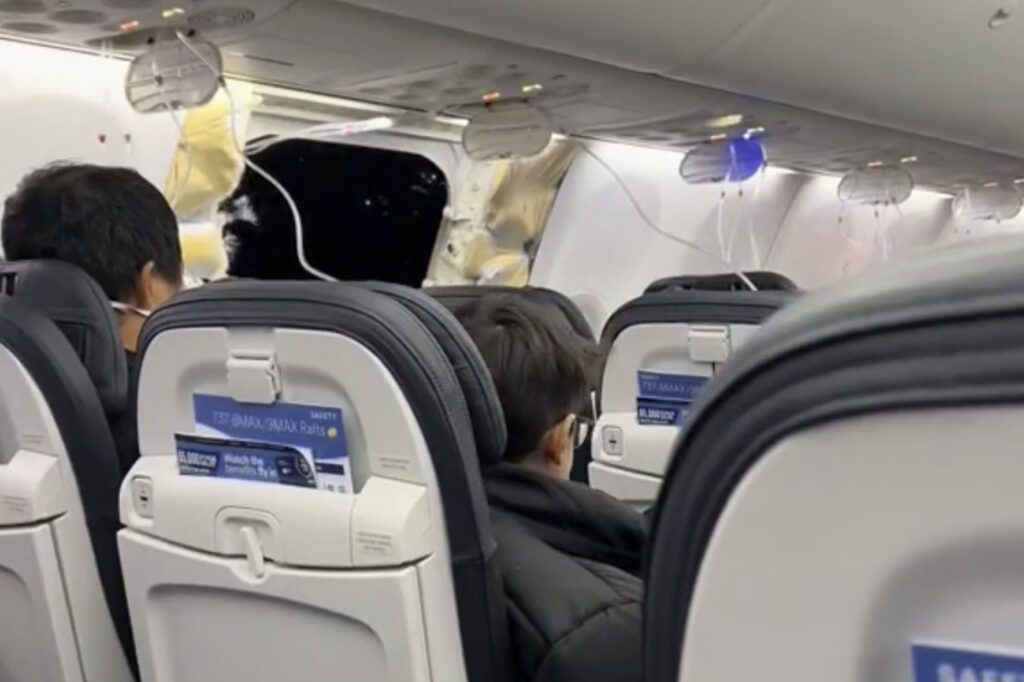
The force ripped the headset off the co-pilot and the captain lost part of her headset. A quick reference checklist kept within easy reach of the pilots flew out of the open cockpit, Homendy said.
Two cell phones that appeared to have belonged to passengers on Friday’s terrifying flight were found on the ground. One was discovered in a yard, the other on the side of a road. Both were turned over to the NTSB.
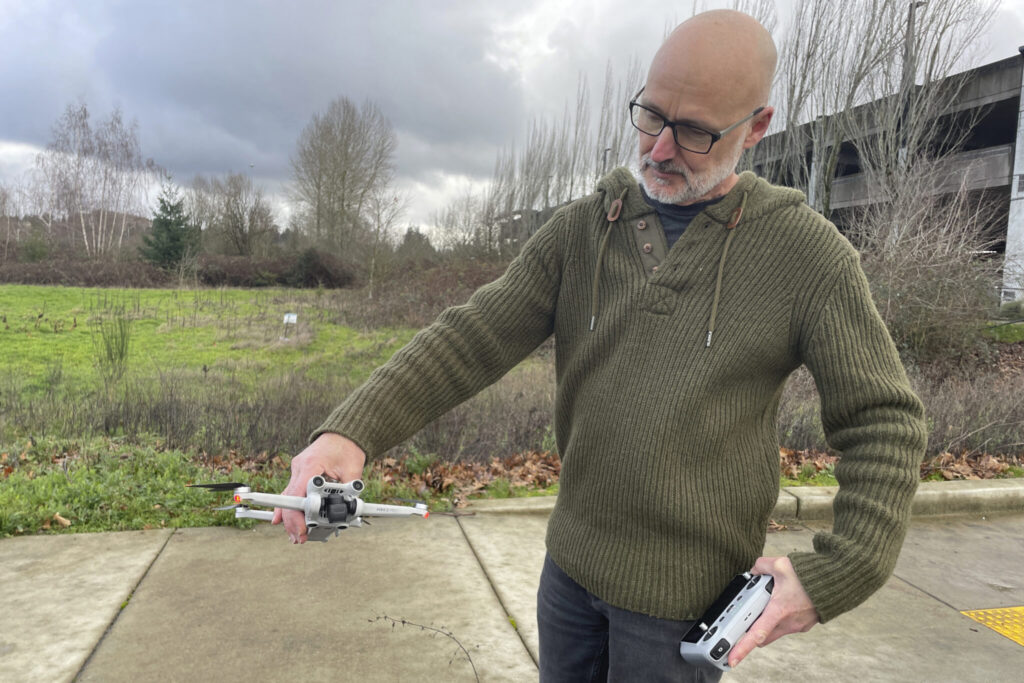
The plane made it back to Portland, however, and none of the 171 passengers and six crew members was seriously injured.
Hours after the incident, the FAA ordered the grounding of 171 of the 218 Max 9s in operation, including all those used by Alaska Airlines and United Airlines, until they can be inspected. The airlines were still waiting Sunday for details about how to do the inspections, but the cancellations of flights involving Max 9 aircraft at both airlines have begun.

Early Monday, Alaska Airlines was forced to cancel 20% of all flights, 141 in all. United cancelled 221 flights, or 8% of its total flights scheduled for Monday.
Alaska Airlines, which has 65 Max 9s, and United, with 79, are the only U.S. airlines to fly that particular model of Boeing’s workhorse 737.
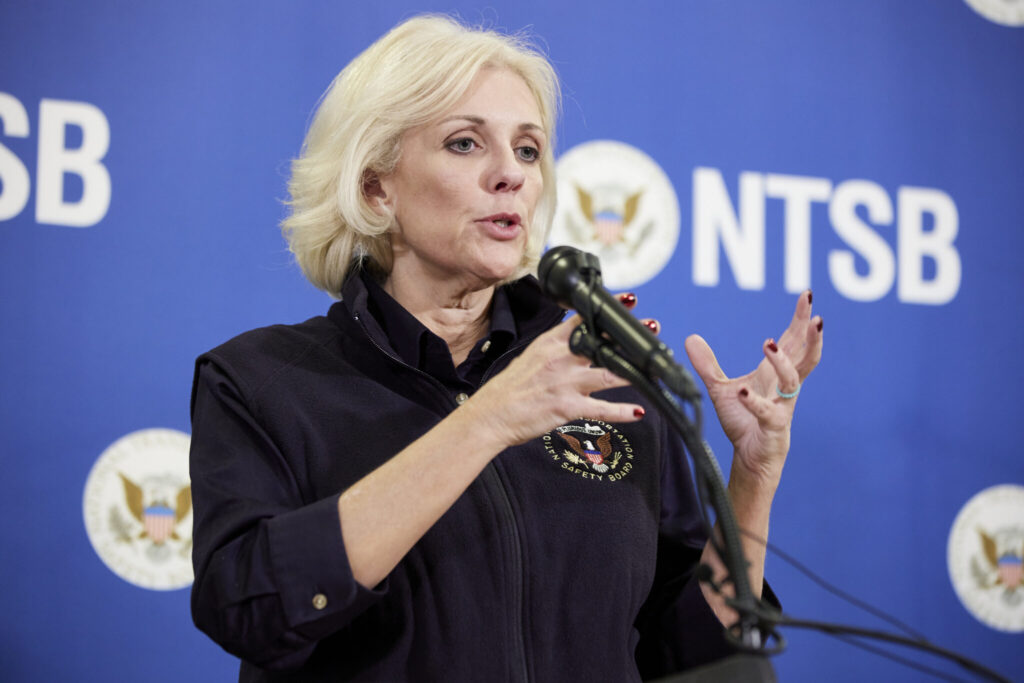
Boeing CEO Dave Calhoun called for a companywide webcast to talk about the incident with employees and senior leadership on Tuesday.
“When serious accidents like this occur, it is critical for us to work transparently with our customers and regulators to understand and address the causes of the event, and to ensure they don’t happen again,” Calhoun wrote in a message to employees Sunday. “This is and must be the focus of our team right now.”
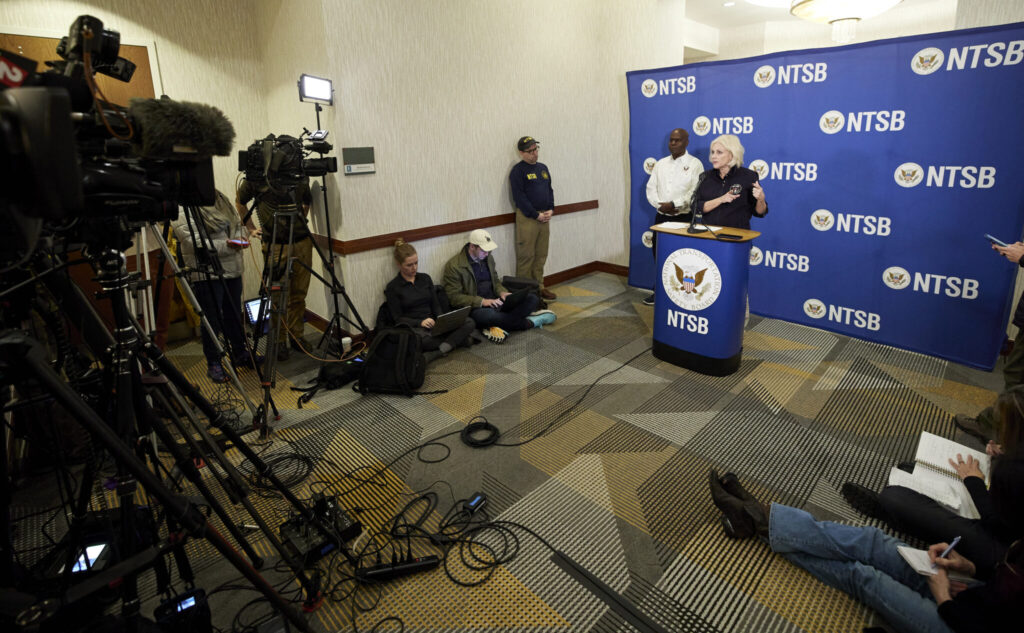
Alaska Airlines flight 1282 took off from Portland at 5:07 p.m. Friday for a two-hour trip to Ontario, California. About six minutes later, the chunk of fuselage blew out as the plane was climbing at about 16,000 feet (4.8 kilometers).
One of the pilots declared an emergency and asked for clearance to descend to 10,000 feet (3 kilometers), where the air would be rich enough for passengers to breathe without oxygen masks.
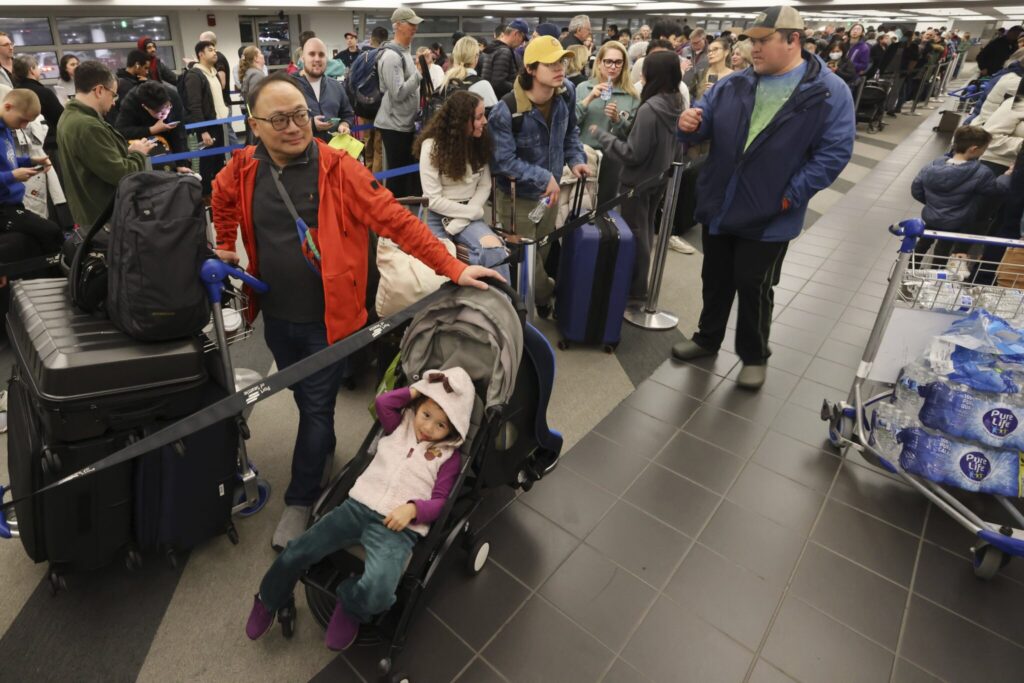
Videos posted online by passengers showed a gaping hole where the paneled-over door had been. They applauded when the plane landed safely about 13 minutes after the blowout. Firefighters came down the aisle, asking passengers to remain in their seats as they treated the injured.
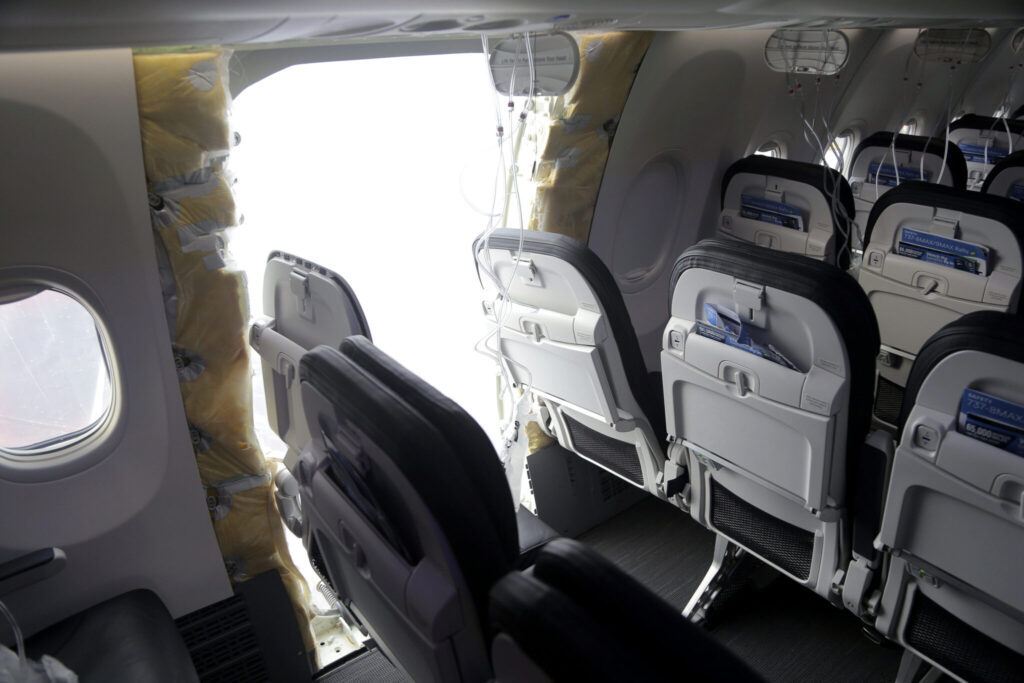
It was extremely lucky that the airplane had not yet reached cruising altitude, when passengers and flight attendants might be walking around the cabin, Homendy said.
The aircraft involved rolled off the assembly line and received its certification two months ago, according to online FAA records. It had been on 145 flights since entering commercial service Nov. 11, said FlightRadar24, another tracking service. The flight from Portland was the aircraft’s third of the day.
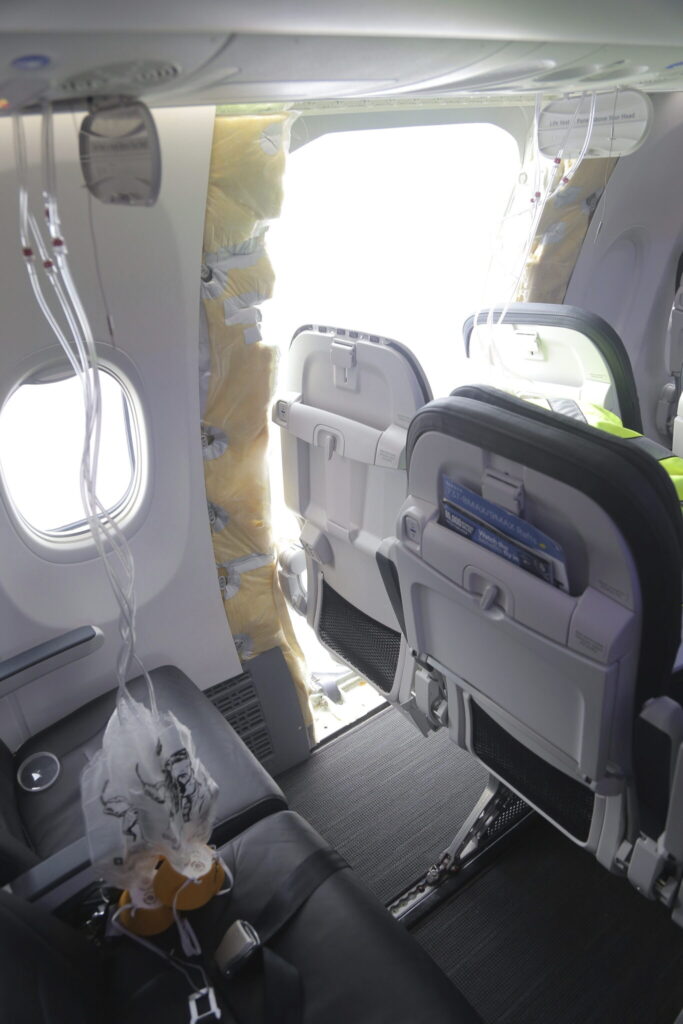
The Max is the newest version of Boeing’s venerable 737, a twin-engine, single-aisle plane frequently used on U.S. domestic flights. The plane went into service in May 2017.
Two Max 8 jets crashed in 2018 and 2019, killing 346 people. All Max 8 and Max 9 planes were grounded worldwide for nearly two years until Boeing made changes to an automated flight control system implicated in the crashes.
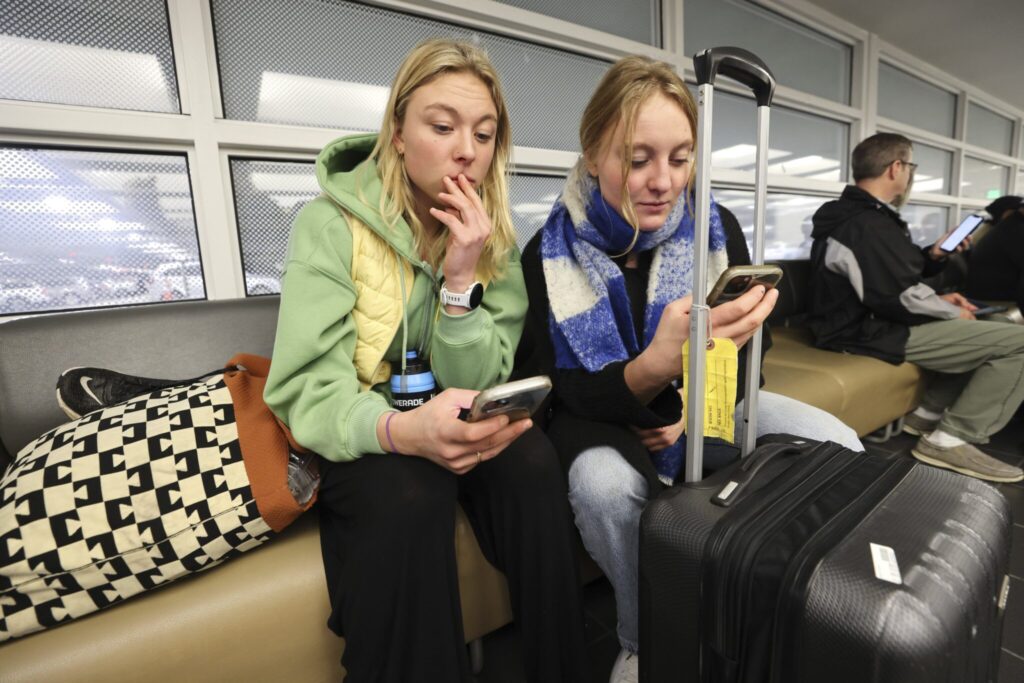
The Max has been plagued by other issues, including manufacturing flaws, concern about overheating that led FAA to tell pilots to limit use of an anti-ice system, and a possible loose bolt in the rudder system.

